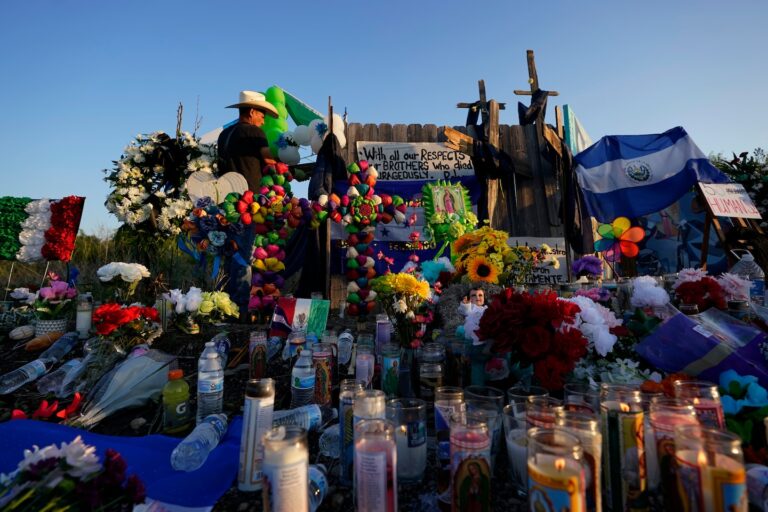Opinion | The migrant tragedy in Texas is the result of a broken system – The Washington Post

Enrique Acevedo is a Mexican American journalist who works as a correspondent for CBS News and a contributor for “El Tiempo Latino.”
On May 14, 2003, a group of 73 migrants was found near Victoria, Texas, locked in a trailer without water, food or air conditioning. Nineteen people lost their lives, including a 5-year-old boy who was found in his father's arms; the father also died. Nothing like this had ever happened in the United States.
On Monday afternoon, nearly 20 years later, the bodies of 53 migrants were found inside an abandoned tractor-trailer near San Antonio. When local authorities arrived at the scene, located 155 miles from the border with Mexico, the dehydrated bodies of the victims were still radiating heat. Just like in 2003, there was no trace of water, food or air conditioning in the vehicle. The scene was so chaotic, first responders took nearly an hour from the moment they found the bodies to rescue the victims who were still alive, including four children.
Read this piece in Spanish: La tragedia migrante en Texas es el resultado de un sistema descompuesto
Unfortunately, these two incidents are not exceptions. In 2012, 23 migrants were traveling in a van when it collided with a tree in South Texas, killing 15 people. In 2017, 10 men died in the bed of a trailer carrying 200 migrants. A similar incident occurred in August 2021.
These criminal organizations exploit the migrants' needs and the corruption in both countries to generate vast profits and operate with impunity. Migrants pay thousands of dollars to smugglers to get to “the other side.” Sometimes the transaction works out, sometimes it doesn't. In some cases, they are captured; in others, they end up losing their lives in the attempt.
Ana, who spoke with me on the condition of only using her first name to protect her identity, arrived in the United States two weeks ago from Puebla, Mexico. She paid $4,000 to a smuggler who promised to get her across the Sonora-Arizona border at the start of summer. She traveled by bus to Nogales, Mexico, where she estimates she stayed four or five days in a house with dozens of migrants. They only had one bathroom in that house and no air conditioning, food or water. During this time of year, temperatures in Nogales frequently reach 104 degrees.
When the smugglers finally came for them, they asked them to prepare to cross the desert at night with the bare minimum to survive the journey. They reached Tucson, where each departed to their final destination. For migrants who cross the border undocumented, aware of the dangers they face, stories such as Ana's are considered a blessing.
That's because at least 650 migrants died crossing the U.S.-Mexico border last year, the most since 2014, according to the International Organization for Migration. The U.S. Customs and Border Protection registered 557 deaths on the southwest border during the 2021 fiscal year, an increase from the reported 254 deaths in 2020 and 300 in 2019. Humanitarian organizations warn that the number is even higher due to the deaths of migrants on the Mexican side of the border not being reliably reported and the U.S. government's systematic failures to recover the migrants' bodies in its territory.
On Monday, Abbott tweeted that the dead migrants this week were on President Biden. However, facts tell a different story. The victims are on an entire political system that has shown itself incapable of tackling the problem through comprehensive immigration reform.
Instead of perceiving border security as part of a broader strategy, Washington became obsessed with sealing off borders to stop undocumented migration. It's a failed experiment with severe consequences for the lives and human rights of those crossing the border.
This “Eyes on Trafficking” story is reprinted from its original online location.

ABOUT PBJ LEARNING
PBJ Learning is a leading provider of online human trafficking training, focusing on awareness and prevention education. Their interactive Human Trafficking Essentials online course is used worldwide to educate professionals and individuals how to recognize human trafficking and how to respond to potential victims. Learn on any web browser (even your mobile phone) at any time.
More stories like this can be found in your PBJ Learning Knowledge Vault.
EYES ON TRAFFICKING
This “Eyes on Trafficking” story is reprinted from its original online location.
ABOUT PBJ LEARNING
PBJ Learning is a leading provider of online human trafficking training, focusing on awareness and prevention education. Their interactive Human Trafficking Essentials online course is used worldwide to educate professionals and individuals how to recognize human trafficking and how to respond to potential victims. Learn on any web browser (even your mobile phone) at any time.
More stories like this can be found in your PBJ Learning Knowledge Vault.
